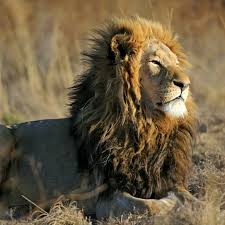Full Pane: Lion (Panthera leo bleyenberghi) (Angola 2018)
Lion (Panthera leo bleyenberghi) (Angola 2018)
10 December (Angola ) within release Great Cats (2018) goes into circulation Full Pane Lion (Panthera leo bleyenberghi) face value 10*300 Angolan kwanza
| Full Pane Lion (Panthera leo bleyenberghi) in catalogues | |
|---|---|
| Michel: | Mi: AO 2051KB |
| Yvert et Tellier: | Yt: AO F1780 |
Full Pane is square format.
Also in the issue Great Cats (2018):
- Stamp - Acinonix jubatus face value 300;
- Souvenir Sheet - Leptailurus serval face value 300;
- Stamp - Panthera leo bleyenberghi face value 300;
- Stamp - Panthera pardus pardus face value 300;
- Stamp - Leptailurus serval face value 1,200;
- Stamp - Caracal caracal face value 300;
- Full Pane - Caracal (Caracal caracal) face value 10*300;
- Full Pane - Cheetah (Acinonix jubatus) face value 10*300;
- Full Pane - Leopard (Panthera pardus pardus) face value 10*300;
- Full Pane - Lion (Panthera leo bleyenberghi) face value 10*300;
Full Pane Lion (Panthera leo bleyenberghi) it reflects the thematic directions:
Animals are multicellular, eukaryotic organisms of the kingdom Animalia (also called Metazoa). All animals are motile, meaning they can move spontaneously and independently, at some point in their lives. Their body plan eventually becomes fixed as they develop, although some undergo a process of metamorphosis later on in their lives. All animals are heterotrophs: they must ingest other organisms or their products for sustenance.
Лев (Panthera leo) — крупный представитель семейства кошачьих рода Panthera, обитающий в странах Африки к югу от Сахары и Индии. У него мускулистое тело с широкой грудью, короткая округлая голова, круглые уши и тёмный пучок волос на кончике хвоста. У него ярко выражен половой диморфизм: взрослые самцы крупнее самок и имеют густую гриву. Это социальный вид, образующий группы, называемые прайдами. Львиный прайд состоит из нескольких взрослых самцов, родственных самок и детёнышей. Группы львиц обычно охотятся вместе, охотясь в основном на средних и крупных копытных. Лев — высший и ключевой хищник.
Mammals are any vertebrates within the class Mammalia (/məˈmeɪli.ə/ from Latin mamma "breast"), a clade of endothermic amniotes distinguished from reptiles (including birds) by the possession of a neocortex (a region of the brain), hair, three middle ear bones and mammary glands. All female mammals nurse their young with milk, secreted from the mammary glands. Mammals include the largest animals on the planet, the great whales. The basic body type is a terrestrial quadruped, but some mammals are adapted for life at sea, in the air, in trees, underground or on two legs. The largest group of mammals, the placentals, have a placenta, which enables the feeding of the fetus during gestation. Mammals range in size from the 30–40 mm (1.2–1.6 in) bumblebee bat to the 30-meter (98 ft) blue whale. With the exception of the five species of monotreme (egg-laying mammals), all modern mammals give birth to live young. Most mammals, including the six most species-rich orders, belong to the placental group. The largest orders are the rodents, bats and Soricomorpha (shrews and allies). The next three biggest orders, depending on the biological classification scheme used, are the Primates (apes and monkeys), the Cetartiodactyla (whales and even-toed ungulates), and the Carnivora (cats, dogs, seals, and allies).



